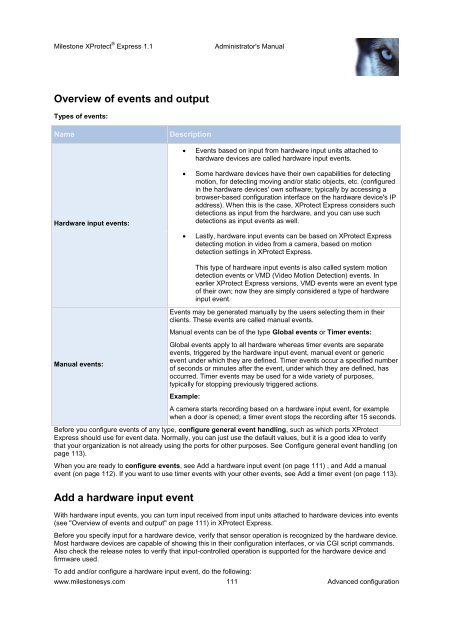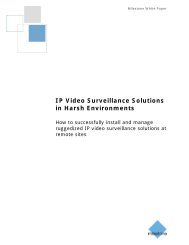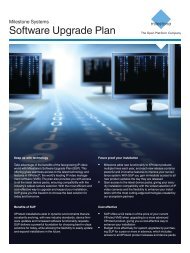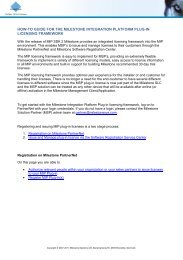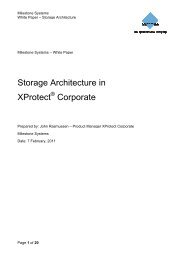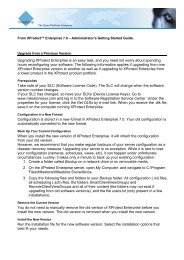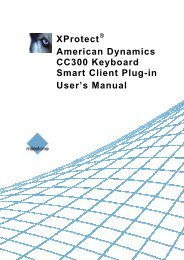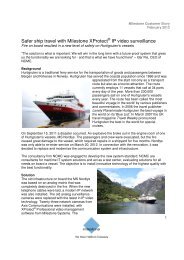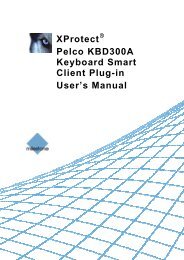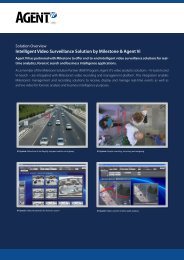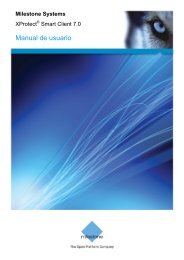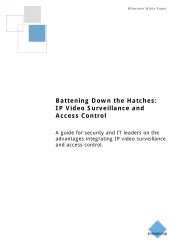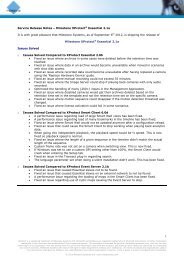XProtect Express 1.1; Administrator's Manual - Milestone
XProtect Express 1.1; Administrator's Manual - Milestone
XProtect Express 1.1; Administrator's Manual - Milestone
You also want an ePaper? Increase the reach of your titles
YUMPU automatically turns print PDFs into web optimized ePapers that Google loves.
<strong>Milestone</strong> <strong>XProtect</strong> ® <strong>Express</strong> <strong>1.1</strong><strong>Administrator's</strong> <strong>Manual</strong>Overview of events and outputTypes of events:NameDescriptionHardware input events:Events based on input from hardware input units attached tohardware devices are called hardware input events.Some hardware devices have their own capabilities for detectingmotion, for detecting moving and/or static objects, etc. (configuredin the hardware devices' own software; typically by accessing abrowser-based configuration interface on the hardware device's IPaddress). When this is the case, <strong>XProtect</strong> <strong>Express</strong> considers suchdetections as input from the hardware, and you can use suchdetections as input events as well.Lastly, hardware input events can be based on <strong>XProtect</strong> <strong>Express</strong>detecting motion in video from a camera, based on motiondetection settings in <strong>XProtect</strong> <strong>Express</strong>.This type of hardware input events is also called system motiondetection events or VMD (Video Motion Detection) events. Inearlier <strong>XProtect</strong> <strong>Express</strong> versions, VMD events were an event typeof their own; now they are simply considered a type of hardwareinput event.Events may be generated manually by the users selecting them in theirclients. These events are called manual events.<strong>Manual</strong> events can be of the type Global events or Timer events:<strong>Manual</strong> events:Global events apply to all hardware whereas timer events are separateevents, triggered by the hardware input event, manual event or genericevent under which they are defined. Timer events occur a specified numberof seconds or minutes after the event, under which they are defined, hasoccurred. Timer events may be used for a wide variety of purposes,typically for stopping previously triggered actions.Example:A camera starts recording based on a hardware input event, for examplewhen a door is opened; a timer event stops the recording after 15 seconds.Before you configure events of any type, configure general event handling, such as which ports <strong>XProtect</strong><strong>Express</strong> should use for event data. Normally, you can just use the default values, but it is a good idea to verifythat your organization is not already using the ports for other purposes. See Configure general event handling (onpage 113).When you are ready to configure events, see Add a hardware input event (on page 111) , and Add a manualevent (on page 112). If you want to use timer events with your other events, see Add a timer event (on page 113).Add a hardware input eventWith hardware input events, you can turn input received from input units attached to hardware devices into events(see "Overview of events and output" on page 111) in <strong>XProtect</strong> <strong>Express</strong>.Before you specify input for a hardware device, verify that sensor operation is recognized by the hardware device.Most hardware devices are capable of showing this in their configuration interfaces, or via CGI script commands.Also check the release notes to verify that input-controlled operation is supported for the hardware device andfirmware used.To add and/or configure a hardware input event, do the following:www.milestonesys.com 111 Advanced configuration


